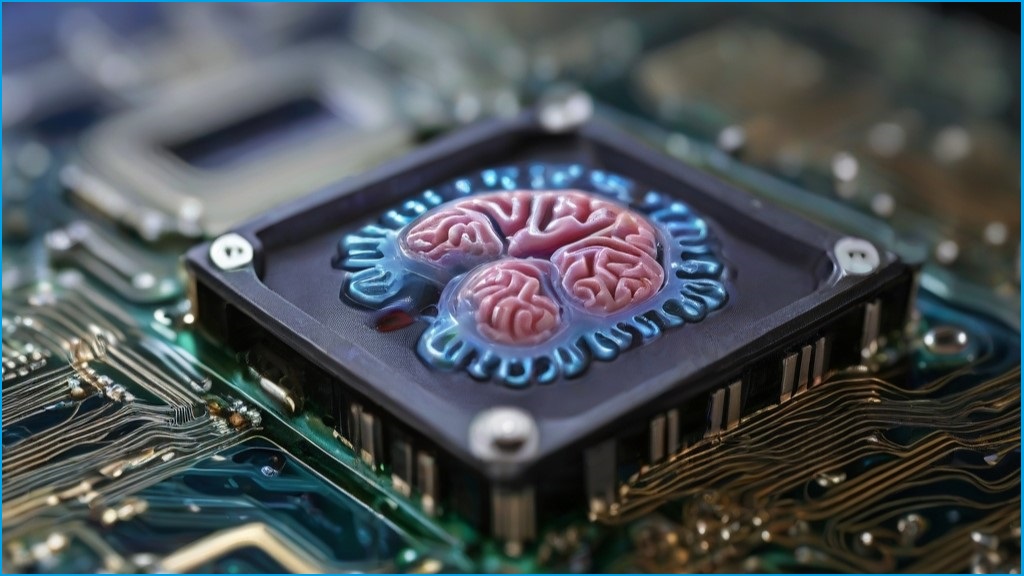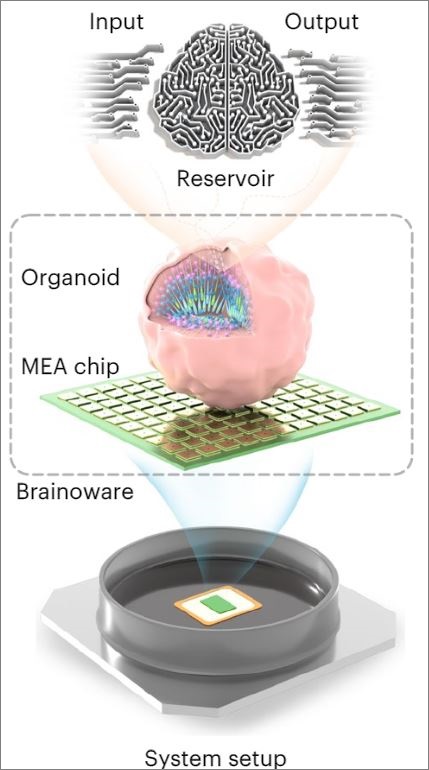Scientists have fused human brain tissue with computer chips in an experiment that hopes to uncover new methods of generating artificial intelligence using biological hardware.
The ‘Brainoware’ devices are the result of hooking up a lump of lab-grown human brain cells, known as an organoid, to electrodes, providing evidence that eerie wetware computers could one day be faster and more energy efficient than their silicon counterparts.
“Compared with current two-dimensional in-vitro neuronal cultures and neuromorphic chips, Brainoware could provide additional insights for AI computing because brain organoids can provide BNNs [biological neural networks] with complexity, connectivity, neuroplasticity and neurogenesis, as well as low energy consumption and fast learning,” says the research paper, published last week in Nature Electronics.
The paper describes an approach whereby the physical biology of lab-grown lumps of brain cells were treated as “reservoirs”, a form of recurrent neural network (RNN) that sees its input “transformed into spatiotemporal patterns in a high-dimensional space”, according to a 2019 paper on the topic.
These systems are good at analysing linear patterns, and the usually fixed nature of reservoirs makes them cheap and easy to deploy because only the output function needs to be re-trained.
Brainoware, on the other hand, is “an adaptive living reservoir” that changes in response to its inputs, taking the reservoir computing model and giving it features of unsupervised learning.
To demonstrate this, the scientists performed two experiments that involved zapping the Brainoware with “spatiotemporal sequences” of electricity encoded with different types of information to treat the lump of brain tissue as the physical embodiment of an RNN reservoir.
One experiment was a speech recognition task where scientists gave the organoid electric pulses corresponding to “240 audio clips isolated to Japanese vowels”.
Scientists recorded how the lump of brain cells responded to the stimuli and put that data into a regression algorithm.
The untrained organoid – referred to in the paper as ‘naïve’ – got the vowels right a little more than half the time.
But after being zapped with data for a couple of days, an interesting thing happened: the lab-grown brain cell clump showed signs of learning; its accuracy recognising Japanese vowels went up to around 75 per cent.
“These results indicate that the electrical stimulation during training may trigger the unsupervised learning of Brainoware for improving computing performance by reshaping the functional connectivity of the organoid,” the paper says.
High-level depiction of Brainoware. Image: Nature Electronics
Scientists also tested Brainoware’s ability to predict “a nonlinear chaotic equation” in the form of a Hénon map.
Again, the organoid performed better after training than before.
For this test, however, the scientists also tried a version of Brainoware that had been treated with a protein that blocks “activity-dependent synaptic plasticity”.
This organoid didn’t have a marked improvement after training, leading the scientists to conclude “that the learning activity of Brainoware was dependent on neural plasticity” – the same feature all our brains have that allows them to constantly adapt and self-modify.
None of this is to say that Brainoware can perform machine learning tasks at the cutting edge, especially when you consider limitations like how the brain tissue can get necrosis and die in the lab (which adds another meaning to the phrase ‘my computer died’).
But the scientists point to some positives of combining brains and computers, namely in the form of efficiency.
The human brain “typically spends about 20 watts”, the Brainoware creators point out, “whereas current AI hardware consumers about 8 million watts to drive a comparative [artificial neural network]”.
Australian scientists previously managed to get a culture of brain cells to play the video game Pong, blending the barrier between animal and machine.











